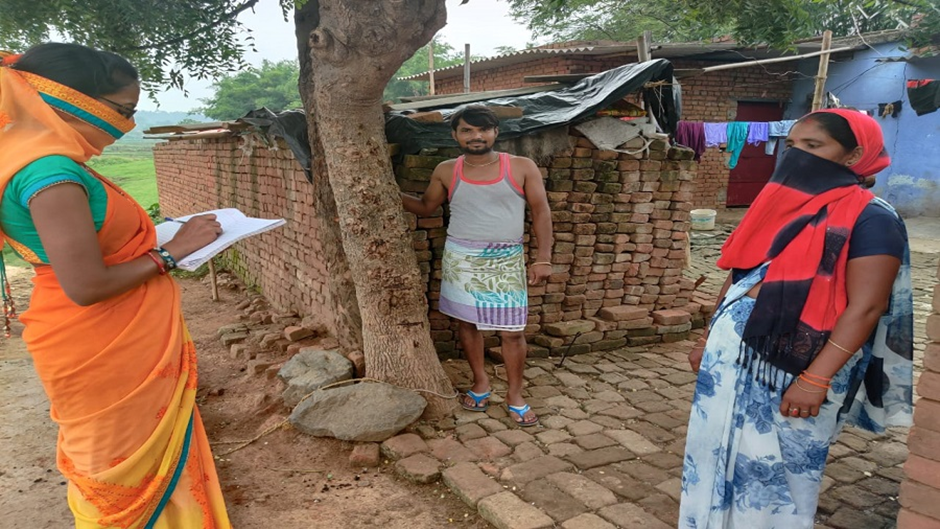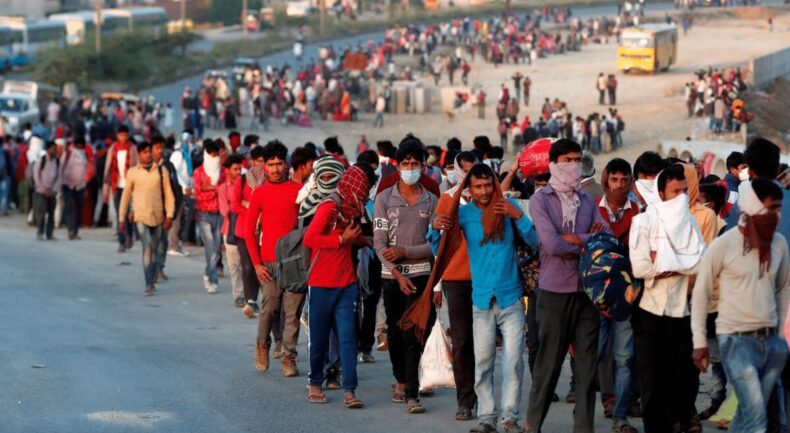The Jharkhand Migrant Survey (JMS) can be understood as a serious step by the state government for its migrant population.
Jharkhand was one of the states that was severely impacted by migrant immigration to their home state. Around 8.5 lakh migrant workers returned to the state during COVID. The heartbreaking images that were published during the migrants’ return may have now prompted the Jharkhand government to launch this exercise.
Jharkhand Migrant Survey (JMS)
The survey, starting this month, will span 24 districts and 11,000 households, with over 60 enumerators taking part in it. These enumerators will cover all 24 districts to conduct the first Jharkhand Migrant Survey. The survey is conducted under the state initiative named Safe and Responsible Migration Initiative (SRMI). The initiative was launched by the end of 2021 and includes the creation of a migrant worker database.
According to officials and researchers, the aim of this Jharkhand Migrant Survey is to map the major sectors in which they work, find out what social security benefits are available to their families, and also check out the health hazards that migrant workers face. One of the lead researchers said that the enumerators will undertake quality assessment and will also talk to community leaders and government representatives.

The questions asked for the Jharkhand Migrant Survey are divided into several sections, such as household characteristics, quality of life, understanding the outgoing and incoming of migrants or both, the push and pull factors, remittance saving and its utilisation, engagement of women within the house, and many more.
Memorandum of Understanding (MoU)
The task of building up SRMI lays with an advisory group called the Policy and Development Advisory Group (PDAG). This group is a part of a consortium that signed a Memorandum of Understanding (MoU) with the state government in October 2021. The main aim of this consortium was to design, build, and implement the SRMI; this also included setting up a technical support unit.
According to Arindam Banerjee, founding partner at PDAG, they would like to produce the first ever researched and consolidated report on state-level estimates of migration and condition, as well as the various factors that influence migration, with the assistance of Jharkhand Migrant Survey. This report and its evidence will then be used to draft a policy framework. The framework will be on migration and the welfare of migrant workers in Jharkhand for the fiscal year 2024-2024.
One of the main key aims listed in the MoU is to integrate the Jharkhand Migrant Survey evidence to design state policies that will help address welfare issues of migrant workers in the state.
Exodus of Migrants during COVID
The COVID-19 pandemic has had a significant impact on the economy in India, leading to widespread job losses and economic hardship. This has led to a large number of migrants, particularly those working in urban areas, returning to their hometowns and villages. Many have been forced to undertake long journeys on foot, as public transportation was shut down to curb the spread of the virus. The state of Jharkhand in India has seen a large influx of migrants during this time.

Many migrants, who were working in urban areas and other states, have returned to their hometowns in Jharkhand due to job losses and economic hardship caused by the pandemic. This has put a strain on the state’s already limited resources, as many migrants are returning to rural areas with limited access to healthcare, food, and other basic necessities. The state government has been working to provide support to the returning migrants, but the situation remains challenging.
Impact of Migrants in a State
The official data shows that nearly 27% of Jharkhand’s population is made up of tribal communities. This segment of people, due to their low human development indicators, migrates to other states for work. Jharkhand has always been a major source of migrant labours and their sudden return caused a lot of social, food, health, and livelihood challenges for the government.
Jharkhand may not be a pioneer in conducting the migrant survey, as it was first done by Kerala and then followed by states like Tamil Nadu and Punjab. However, Kerala’s migrant population was made up of Gulf-going people, whereas Jharkhand’s was made up of internal migrants. Jharkhand Migrant Survey may be a step towards a better future for the migrants.













